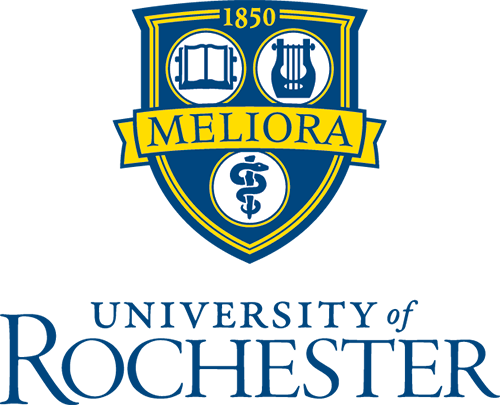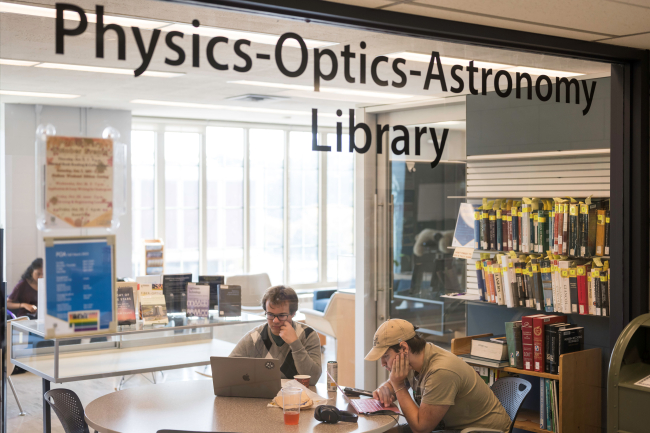
Bausch & Lomb Hall, home solely to the Department of Physics and Astronomy at the University of Rochester, sees few students who aren’t studying physics and astronomy. There’s a good chance some students in the arts and humanities will spend four years at Rochester without ever stepping foot in the building. That’s how Jim Mayer ʼ82, now an ardent patron of the University libraries—he received the Robert F. Metzdorf Award for his contributions in 2015—went four decades without knowing about the Physics-Optics-Astronomy (POA) Library.
POA is located on the third floor of Bausch & Lomb Hall, and Mayer was an English major during his undergraduate years on campus. So it wasn’t until about a year ago that he learned about POA.
Because Mayer is such a good friend to the libraries, Kevin Garewal, the vice provost and Andrew H. and Janet Dayton Neilly Dean of the University of Rochester Libraries, presented him with a plan to give POA its first major update in 50 years. After a brief tour and a crash course on the library from POA librarian Ben Mitchell, POA section supervisor Jeff Jones, and Garewal, Mayer said, “I want to help.” Through a generous gift, he provided the catalyst for the comprehensive refresh.
As POA’s facelift neared completion, Mayer visited the site to see it with a new coat of paint. He left with an infusion of Rochester pride. Walking the space, he was fascinated by the contents of the whiteboards. To a humanities-minded person like himself, the intricate diagrams and formulas seemed like the makings of a Nobel Prize in Physics. His attention was eventually grabbed by a group of students having an intense discussion at one of the long collaboration tables. To get a sense of what he was seeing and hearing, imagine a scene in a science-fiction movie where scientists are trying to figure out how to prevent a meteor from obliterating the moon.
“I realized these are very serious students,” said Mayer about his visit, “and the work they’re doing is what we mean when we talk about ‘ever better.’ So, they deserve a serious place to do that work.”
Finally—POA gets some TLC
Any member of the University community can use POA, but undergraduate students with declared majors, graduate students, and faculty within physics, optics, or astronomy can access the space 24 hours a day. “It’s like another home for POA students,” says Garewal, “and it was important for us to keep that in mind when we started the refresh.”
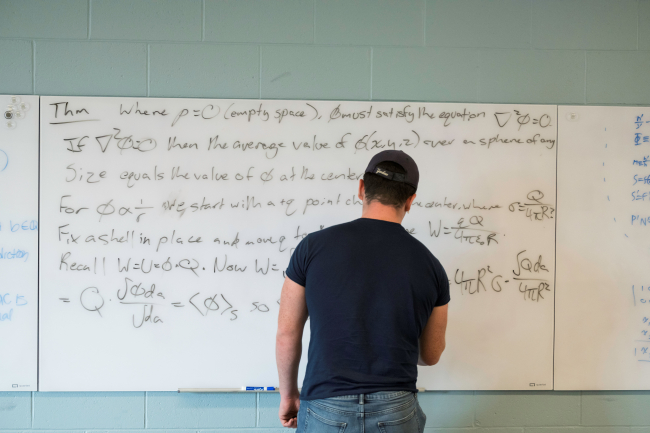
POA celebrated its rejuvenated space with a ribbon-cutting ceremony during Meliora Weekend 2023.
“This is an incredible milestone for the library,” said Jones at the event. “It’s a project that has been in the works since 2015, so I’m really thankful to all the people involved, including a number of previous librarians who kept this project moving, my River Campus Libraries colleagues for their guidance, and Jim [Mayer] for really getting the ball rolling.”
As far as milestones go, the refresh could be considered the most significant in POA’s history. With the exception of some shifted shelving, a handed-down couch here, and a desk bike there, very little about the library’s physical appearance changed after it was established in 1972. Décor aside, it lacked certain functions one takes for granted inside a contemporary building—like light switches (until recently, all of the lighting was controlled by circuit breakers).
However, despite the decades of aesthetic and functional torpor, POA didn’t undergo a “Move that bus!”-type transformation.
Unlike Gleason Library’s extreme makeover in 2021, POA’s refresh was akin to treating an illness with precision medicine—with Jones and Mitchell playing doctor. By and large, POA was beloved as it was, making it critical that the refresh address the library’s ailing features while protecting—and enhancing—its overall vibe. To administer the correct dose of renewal, the POA team conducted several surveys, focus groups, and charrettes to fully understand users’ needs and uncover any hidden pain points. They also had the benefit of an assist from students participating in the Q&i Experiential Learning Program, whose projects helped shape the scope and details of the refresh.
The results are akin to if actor Paul Rudd were to suddenly look the way he did in 1995—the same, but more youthful.
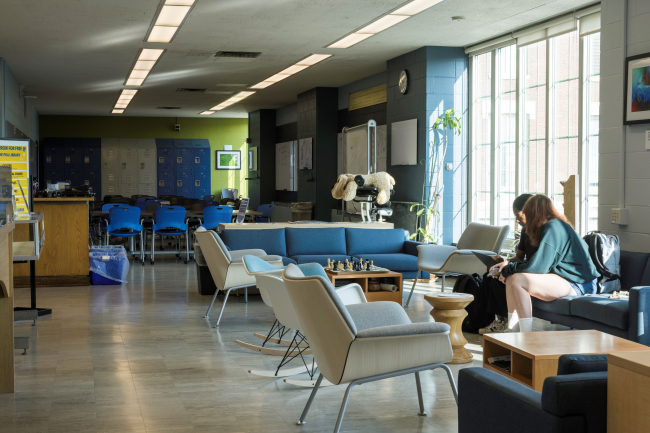
From communal work to independent study
Let’s explore the room, starting on the left side where a sparkling aggregation of whiteboards flanks four rows of new group work tables and chairs. (Fresh whiteboards, which were installed throughout the space, are easily among the most popular enhancements.) In the far corner of this end of the library, an office that doubled as storage space was converted into a reservable room, where students can meet in small groups, have Zoom meetings, watch videos for classes, or do anything else without the full volume of the library’s commotion.
Heading into the center, a lounge area once home to a mishmash of furniture now has a smart collection of modern soft seating. It’s the most immediately visible example of seating upgrades across the space and clearly announces, “We’ve entered the 21st century.” Some might say the same about the other side of the room, which used to be a cubicle array from the 1990s. While the actual panel system was scrapped, the spirit of its function was used to create an office for the POA librarian and a flex space for various library programming and student use.
“A few of my friends will go in there with a TA to have a sort of review class,” says Melanie Landis ʼ26. “It’s nice because it’s kind of boxed off.”
In addition to using the flex space, TAs can now meet with students at a dedicated set of tables for one-on-one and small group interactions typical of office hours. A couple of tables may not seem like much, but it’s noteworthy given how many questions directed at POA staff started with “Where is the TA for...”
The TA alcove, flex space, lounge area, and section of group work tables all serve as purposeful zones intended to cater to specific user needs. This framework has always existed at POA, with the refresh either enhancing or adding to it. Nowhere was this more significant—or highly anticipated—than in the quiet study area.
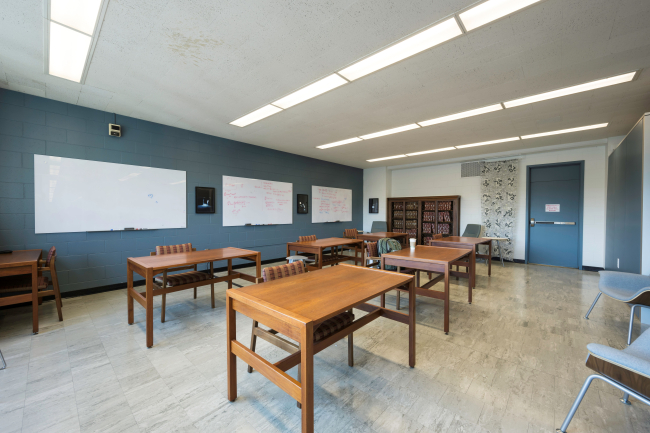
POA’s quiet zone, a permanently partitioned section at the library’s south end, is the refresh’s showstopper. In the past, the combination of the library’s communal nature and its corridor-style layout—which allowed sound to travel freely from one end of the space to the other—made it inhospitable to those looking to work with minimal background noise.
“If I came [to POA], and I actually needed to focus on something and it was loud, I would leave,” says Henry Howard ʼ24, who fled to other library spaces that have dedicated quiet areas, such as Gleason Library and Carlson Science and Engineering Library. “This gives me a way to study in the quiet and still be near my classes and people.”
The next 50 years
It bears repeating that users loved the old POA. Even Howard, who’s a huge fan of the new quiet study space, would have been fine if everything stayed the same. Which isn’t to say he’s not appreciative. For him, the gesture was worth more than the changes themselves. “It’s not like the old tables were unusable or the old whiteboards were bad,” he says. “But the idea of putting in the money and effort to improve the space is a way of showing respect for the people who use it and furthering its use.”
To those who share Howard’s perspective, rest assured that the next updates to POA will occur long before its centennial. Plans are in place to further warm the space with area rugs for the quiet study and lounge areas as well as to create a true display area for proper exhibitions. And on the modernization track, days are numbered for the library’s lighting and ceiling, first among the space’s elders. The POA team will also look to free up some room near the entrance by replacing a massive service desk (after ensuring its removal won’t affect the structural integrity of Bausch & Lomb Hall).
Is all of that needed? Not necessarily. But it goes back to Howard’s point about recognizing the community and what POA means to them. And it means a great deal.
“I’ve read about how aspects of college that revolve around community-building and socializing can affect your grades,” Howard says. “So the fact that the physics department has this extra thing makes a huge difference. If it weren’t for some of the friendships and experiences I’ve had in POA, I probably wouldn’t be doing as well academically.”
All photos were provided by J. Adam Fenster, the University of Rochester photographer. For questions on the Physics-Optics-Astronomy Library, contact Jeff Jones.
Enjoy reading about the University of Rochester Libraries? Subscribe to Tower Talk.
